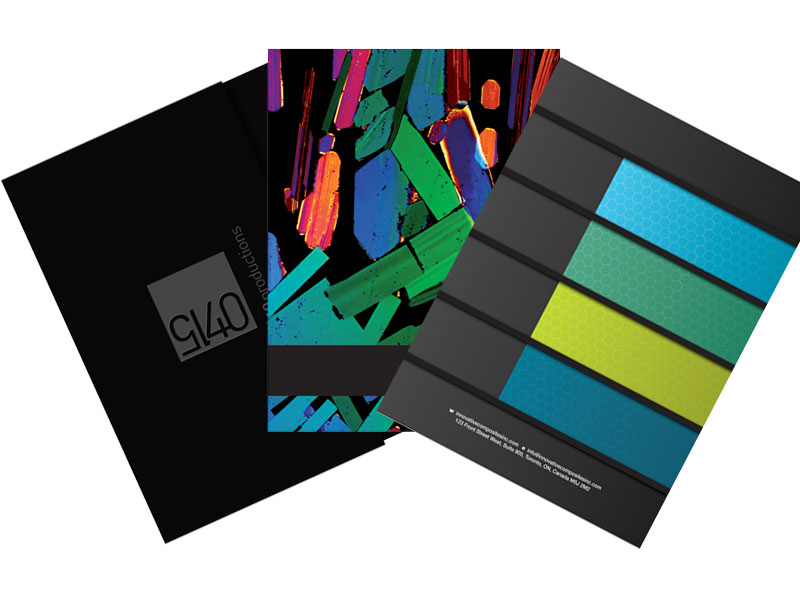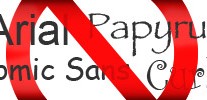
If you ever want to get a bunch of graphic designers riled up, gather them together in a room and ask them this question:
“Should graphic designers ever work for free?”
It’s been a hot-button issue in creative fields for as long as anybody can remember, and there’s no definite answer that everybody can agree upon. Some graphic artists say it’s okay to work for free every now and then to build up your portfolio and experience, while others say the very act of doing design work for free is harmful to the entire professional design community because it devalues the work you do.
Because it’s such a gray area, we’ve taken it upon ourselves to issue forth these ten commandments to guide graphic designers and help them decide if they should work for free. Following these principles will ensure that you aren’t taken advantage of and that you aren’t helping to perpetuate a system that is harmful to other professionals.
And hey, if you want to read the rest of this article in a Charlton Heston voice, that’s fine with us.

Graphic designers’ friends and family often expect preferential treatment when it comes to their own graphic design projects—and that’s usually okay. After all, who really wants to charge their own grandmother for helping to make her annual holiday card?
There’s nothing wrong with working for free when it’s someone you care about. But the problem many designers have is that they let their friends and family walk all over them.
For example, say your friend wants you to design invitations for her wedding. Now, under normal circumstances, your friend would pay someone to do this for them—either another designer or the print shop itself. So you have to ask yourself if taking on this job is really worth the time. After all, it’s time you wouldn’t be able to use to make money from a paid client.

You might decide to do the job for free as a wedding gift to the bride and groom, in which case the time you spent would have value since it would save you the cost of having to buy a present. Maybe your friend just needs help working from a template, in which case you might spend only a few minutes helping her out and wouldn’t need to charge her for the time you spent.
But let’s say your friend is kind of a bridezilla, and you know she’ll ask for a hundred different revisions and eat up a lot of your time. Or maybe you don’t know the friend well enough to feel comfortable working for free. In cases like these, you might offer a discount or simply walk away from the job altogether.
As much as we love our family and friends, they’re not always the best clients to work for. You don’t want to take on a job only to have it sour your friendship or make Thanksgiving awkward.

If you’re unfamiliar with the concept of “speculative work,” it pretty much boils down to “work you aren’t guaranteed to be paid for.” Spec work can be a blanket term referring to most instances where designers work for free, but typically it’s used to describe a very specific situation where clients will ask for open submissions from designers instead of hiring them outright.
If the client likes your work over any of the other open submissions, they’ll pay you for it and possibly hire you to continue doing work for them. But if they don’t like your design, you won’t be paid for the work you did, and you probably won’t be able to sell the design elsewhere without editing it. This is why many graphic designers are against the idea of spec work—because you can end up in a situation where you spend time working on a project that’s of no use to anyone.
Spec work can be bad for the client, too. No brand will ever benefit from an open submission approach to design as much as they will from sitting down with a designer, explaining their needs, and working out a consistent game plan.
However, spec work isn’t entirely bad, and some graphic designers argue it can even be beneficial so long as you don’t invest more than you’re guaranteed to get back. In an ideal situation, spec work is only a small sample of what you do for the client, not the final result itself.
Treat spec work like an audition, not opening night. Give the client an idea of what to expect, but don’t spend time making it look like the final product. If you play your cards right, you’ll have a design that you can use more than once should the client decide to go with someone else.


There’s an old chestnut of business wisdom that says if you give away your product for free, people will come back and buy it from you. If you wonder if there’s any truth to that statement, look no further than successful “freemium” services like Hulu and Spotify that offer their product to the consumer for free, but also offer premium features with a paid subscription.
But the difference between these multi-million dollar companies and a professional graphic designer is that one has the resources to give away their service for free, while the other simply can’t. Big corporations can give away their product for free because they stand to gain much more than they lose if they convert even a small percentage of people.
As a graphic designer, you’d have to make enough money from your paid work to cover the time lost making all your free samples. If you go around offering free business card designs, that’s exactly what you’ll find yourself doing most of the time—working for free.

A better approach is to offer something for free when a client pays for work, like offering free revisions or taking out the cost of one item when creating a brand identity. That way, you still give the client the feeling that they’re getting a good deal, and you’ll be able to turn a profit at the same time.

Contests are a great way for designers to gain exposure, earn accolades, and maybe even win a nice prize—they are not, however, a good way to find paid work. When companies ask designers to compete for a job, it essentially boils down to doing spec work.
But where spec work might at least lead to full time employment or payment for your design, many design contests won’t give you much of anything in return. Sometimes the only “prize” is that the brand will use your final design; they posit that the exposure will be good enough compensation. In the end, who’s the real winner—you or the company receiving free graphic design work?

With regular spec work, you can almost always create it in such a way that the design is reusable if the client doesn’t like it. But many design contests stipulate that any entry you submit becomes the property of the company holding the contest.
So how do you tell the difference between a good contest and a bad contest? Measure the contest’s prize versus how much work you would have to put into entering it. For example, if the contest only asks for the best piece from your portfolio (and won’t claim ownership of it), then it wouldn’t hurt to enter it even if there’s no monetary prize involved.
But if you’re creating something just for the sake of entering a contest, the prize has to be worth enough to put in the extra time. It’s up to you to determine what your time is worth, but no matter what the prize, you shouldn’t let contest work get in the way of your paid work. Think of it as something you do instead of watching TV or hanging out with friends, not something you do during work hours.

A lot of graphic designers fall into the trap of working for “exposure” when they’re just starting out because they need content to add to their portfolios. But when you work for exposure, the people who get to use your work for free end up with a much larger benefit that you.

You often see ads from start-up companies who don’t have money to pay a graphic designer, so they offer exposure instead. The problem with accepting these kinds of jobs is that most start-ups don’t have the media presence necessary to give you any actual exposure.
On the other hand, if the company in question does have a high enough profile, then working for exposure is kind of a raw deal because a company that big should really be paying their graphic designers.
So what can you do to get exposure? Spend time building your own website, submitting your work to design contests and blogs, or creating sample work. If you do decide to work for free to pad out your portfolio, then it’s better to work for family and friends or for brands or charities that you want to support.
For example, say you’re a fan of a local band that needs someone to design their album art, but they have no money. There’s no harm in doing it for free so that you have something for your portfolio, especially if designing album covers is something you might want to do in the future. In the end, you’d be supporting a band you like while also building towards future paid work.
But very rarely will you be given a situation where the exposure is worth more than what you could have made from working for pay.

There are two different schools of thought when it comes to internships:
- They’re a great way for designers to get hands-on work experience and possibly gain full time employment
- They’re a great way for companies to trick designers into working for free with no obligation to hire them full-time
Both of these statements are true to a certain degree. Internships can be beneficial to graphic designers who are just starting out or changing fields, but you have to avoid the ones that aren’t going to give you anything in return for your work.
Paid internships might offer a stipend or a small income, but at least you’re being compensated for your work. If you do decide to take on unpaid internships, then make sure you’re getting something out of the experience other than learning how to brew coffee and make copies.

Ideally, an unpaid internship leads to full-time employment or at least some college credit for the time that you put in. Even if neither is offered, it may still be worth your time to take on an unpaid internship if it’ll help you learn some new skills that will make you a better designer.
Let’s say you want to get into print design, but you don’t know anything about it. Taking on an unpaid internship at a print shop would be a good way to get more experience. A good internship is mutually beneficial to both the intern and the employer. In the end, you want to make sure that the time you put in is worth whatever you get out of the experience.

Sometimes you run into weird gray areas as a designer where a job will only “kinda, sorta” offer payment. Even if there might be the promise of something worthwhile, you should still treat these situations as similar to working for free.

Sometimes a potential opportunity will offer something other than monetary payment, such as free goods or services. In these situations, it’s the value of what you’d be receiving that determines whether you should take on the work. If it’s less than what you’d normally charge, it might not be worth your while.
You don’t always have to use monetary value as your only means of defining the value of something. Maybe a neighbor offers to shovel your driveway all winter in exchange for some design work. There’s not much monetary value in something like that, but it might be a good value to you if you hate shoveling snow or if it’ll free up time to work for your paid clients.
Sometimes what you’re bartering for isn’t exactly guaranteed, in which case there’s a higher risk factor involved. You might find clients that offer stock options instead of payment, or start-up companies that offer to pay you only after they secure funding.
These kinds of offers aren’t exactly working for free, but there’s always the chance that you’ll end up with no pay. It’s up to you to evaluate the offer and determine the risk value. If it’s a brand you believe in and that you want to help grow, then it might not be a bad idea to get in on the ground floor. Just make sure that what you have to gain and when you’d be able to receive it are laid out clearly.
But don’t make the mistake of thinking you’re full-time employed if you’re only working on the hopes that you’ll get paid if the company succeeds. These kind of endeavors are high risk, high reward; you’re essentially betting it all to either go big or go home empty-handed. Only put in as much as you can afford to lose.

When you work in a creative field, everybody always wants to pick your brain. What many graphic designers don’t realize is that when they give away their ideas for free, they’re essentially doing work without pay. Just because you’re not designing something doesn’t mean you’re not offering a service that you would normally get paid for.
There’s no harm in offering a quick once-over or a brief critique of someone’s design, but don’t let anyone mine your head for ideas without being compensated for them. After all, when you pass off someone else’s ideas as your own, it’s normally considered plagiarism. And if you give away your ideas to someone else, that’s an idea that you can’t use for yourself or sell to a client, which means you’ll have to spend even more time coming up with your own ideas later on.

If you’re approached by a business or professional who is looking for graphic design advice, it’s okay to offer a free word or two—but it’s better to offer up your ideas as part of your graphic design services. Use these opportunities to get real paying work.
If other graphic designers want your advice, it’s up to you to decide what to say. If you suspect they’re going to take your ideas and sell them to a client, then you might want to ask for some sort of compensation.

Rest easy if you have an altruistic nature; it’s totally okay to work for free for charitable reasons. Whether this means supporting a cause, a nonprofit or just helping someone out of the goodness of your heart, what you do with your time is completely up to you.
As a bonus, sometimes working for free can provide you with a tax write-off, so there’s still some benefit to you (other than, you know, feeling good because you’re an awesome person who helps other people).
There are, however, a few tiny traps you need to avoid when working for charitable causes. For one, just because an organization is nonprofit doesn’t necessarily mean they don’t have the money to pay overhead costs for things like office space, employee salaries, utilities…and graphic design.
It’s something to keep in mind, but it doesn’t necessarily mean you shouldn’t work for big charities for free. Again, what you do with your time is up to you, and even if a nonprofit can afford to pay you, the money they save by not paying you can go towards helping people who need it.
However, there’s no shame in looking out for your best interests. Don’t feel pressured to be altruistic if you can’t afford it. The pendulum swings both ways; do what you feel comfortable with, even if you only feel comfortable when you’re being paid.


Here’s something that might surprise you to hear: working with no pay is an inevitable aspect of being a graphic designer. Even if you never work for anybody else for free, you’ll still have to spend time working for yourself for free—creating your own brand identity, maintaining your portfolio, applying for jobs, staying in touch with clients, creating invoices and networking. There’s all sorts of non-billable work that you have to do to keep things going, and you can’t exactly charge yourself for doing it.
So what’s the difference between working for yourself and working for free?
If you do it right, there is no difference.
Working for free should ultimately benefit you in some way, just like designing your personal branding or updating your portfolio. And when you do stand to take a loss, find a way to change the game so that you gain something in the long run.

Take on all the free work you want, but piggyback that work on top of the unpaid work you have to do for yourself. Use it as your chance to experiment with new techniques, learn new software, find new solutions to problems that have been slowing down your work, or create templates and elements that you can use in future designs.
If you’re the type of person who never finds time to work for yourself, then these opportunities might be just the motivation you need to get your house in order.
What Do You Think?
Should graphic designers work for free? Have any experiences to share, either good or bad?
Speak up in the comments below and let’s continue this debate.






Great article…wish I had seen some of these years ago, but instead I had to learn the hard way! lol Great advice to share with that young graphic designer in your life! …maybe these “Ten Commandments” should be taught in school!
Amen……I’m so on board with this article.
We as Graphic Designer must stick together, by turning our backs on those who think that our services are worth minimum wage. We must raise the bar of design cost to where it should be. Over the past ten years or so, our services, talents and abilities has been reduced to total disrespect by them who desire to manipulate our craft to the worth of toddlers scribbling with crayons. Enough already!
“WE SHALL NOT BE REDUCED TO STARVING ARTIST!”
And I can’t forget my own depressing experiences – doing work gratis for “poor” non-profits or start-ups only to see them hire some “real” talent when they suddenly had money.
Sure I was good when I was free, but not, it seems, if it would actually cost them $$. Then only the “best” would do.
(Of course I had also done highly paid work for Fortune 500 companies, but that was irrelevant to them…)
If you set yourself up so you are selling your own designs as artwork, then you are always working for free until your work sells. But you are working for yourself for free. And it’s not really free if you have lots of work selling. But how does one get there? You have to start creating in the direction of your passion without fear or regret. That is what produces the amazing work that people want to buy. Just think, instead of working for ‘clients’ you could go out and create something amazing that every 100th viewer wants to buy. Then your ‘free’ work starts to pay dividends and you can forget about dealing with so many clients. Is it hard? No, but do you have to be fearless & amazing? Yes!